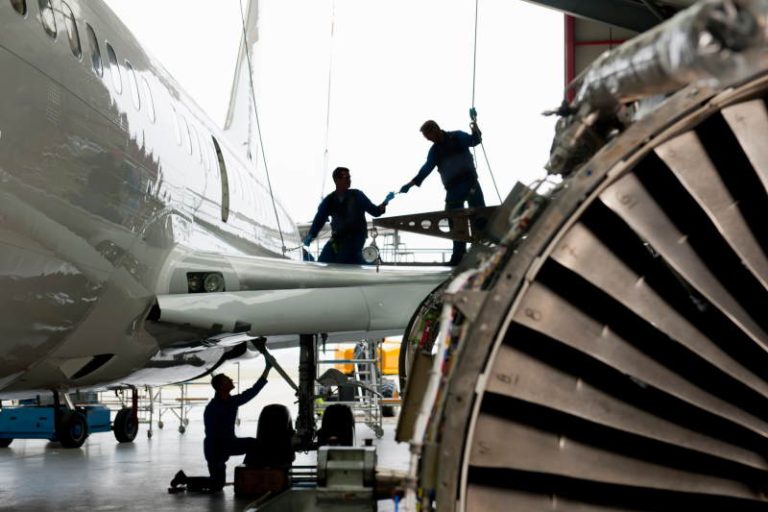Blog
Don't miss the latest updates

Artificial intelligence for Business Applications
A human-computer dialogue, with proactive context-driven intervention of AI software, leads to better joint decisions than those made separately by each of them alone. This is the basis for future trends in the development of AI products for business needs that will generate maximum business value.
The term “Artificial Intelligence” usually arouses controversy, due to the very fact of attributing such a human characteristic as intelligence to a structure made up of silicon chips. The controversy, which usually takes place between philosophers and technologists, faces difficulties from its very inception, not only because it is difficult to define ‘artificial intelligence’, but because there is also no clear and unambiguous definition of the term ‘human intelligence’.

Digital Twin Applications for Manufacturing, a Buzz or the Real Deal?
Digital twin technology has taken the manufacturing industry by storm. This innovative technology creates a virtual representation of a physical object, system or process, and uses real-time data to understand and optimize its behavior. In this article, we’ll take a closer look at the top digital twin applications for manufacturing and explore their benefits, and actionable insights.

How to Reduce Composite Material Waste: Steps to Overcome This Industry Challenge
Composite materials are increasingly popular in various industries, including aerospace and construction, due to their durability, strength, and lightweight properties. However, their use also generates composite waste materials, which pose a challenge in terms of waste disposal. To overcome this challenge, the industry must reduce composite material waste through effective manufacturing waste management practices , and also maximize their existing materials. In this blog post, I’ll discuss composite material waste, the difficulties we stand against to recycle these materials and some steps to reduce composite material waste and make the industry more sustainable.

8 Top Industrial Manufacturing Conferences You Should Attend in 2023
Manufacture your path toward business growth this year by penning down some professional resolutions. You guessed it right: in-house conferences are making a comeback and this time, they are in full gear to digitize your manufacturing business. Attending prominent ones should be on your resolutions list if you want to bring your manufacturing business to the next level.
Let’s have a look at some top industrial and aerospace, composites manufacturing conferences of the year 2023 that you must attend to stay on top of your digital manufacturing game.
8 Best Conferences to Attend in 2023 in the area of aerospace and composites Manufacturing

What is AIoT and How Manufacturers Can Increase Productivity & Reduce Costs
Artificial Intelligence (AI), and the Internet of Things (IoT) are increasingly becoming mainstream in the manufacturing industry. What is perhaps less understood is the degree to which these technologies are converging.
AI takes manufacturers to the next level by leveraging the data collected by the IIoT. Given all this, it makes sense to begin thinking about the next concept – the AIoT – the Artificial Intelligence of Things.

Industry 4.0 Manufacturing Optimization Trends in the Aerospace Composites Sector for 2023
Today, Industry 4.0 implementations are focused on helping manufacturers meet the growing demand, increase productivity, and overcome supply chain challenges, all while dealing with workforce shortages.
A major part of this mission includes implementing new technologies to automate repetitive tasks and optimize production processes (resulting in increased quality, minimized rework, reduced material waste, increased throughput, and optimized production planning based on accurate demand forecasting).
These are the main Industry 4.0 trends we forecast to be in the spotlight for the Aerospace composites industry in 2023:

6 mistakes manufacturers are still making but can’t afford to
In today’s complex-manufacturing competitive landscape there’s no room to make critical mistakes. Following over a decade of close collaborations with top discrete manufacturing players, we’ve come to know and learn to spot some of the most widespread mistakes. This article looks at the common pitfalls and examines top manufacturers’ strategies to avoid them.

How the labor shortage is killing Aerospace composites manufacturing and how to solve it
With a rising skills gap and an emphasis on attending university over learning a trade, the manufacturing labor shortage is not a new problem. However, it is one that the pandemic has supercharged. Post-covid workers are looking for flexibility in where and when they work and higher pays – something at odds with today’s manufacturing landscape that requires physical in-person shift work and the need to meet tight deadlines.
Supply chain issues are also compounding the productivity issues stemming from labor shortages. Suppliers are facing the same labor shortages as manufacturers. Given the aerospace industry relies on long and complex supply chains, it only takes a short delay to create significant ripple effects, slowing down production.

The Key Role of Industry 4.0 Technologies in Process Optimization
Manufacturers in every field are always busy looking for ways to improve their business operations and scale up their throughput – it’s an endless challenge.
In order to achieve this goal, they must examine each step of their current workflow and form dedicated optimization strategies. This is the crucial procedure of process optimization in manufacturing, a never-ending journey that should be reviewed time and again, and in which continuous improvement is measured in micro-steps. The road towards the ultimate goal of improving the company’s bottom line is a long one indeed.

AI In Manufacturing Optimization – 5 Examples
When the word ‘AI’, enters the discussion things become interesting. “Oh, we already use AI,” people say to me.
I’m always happy to indulge in conversations about AI use cases, so I immediately ask if they would be OK with telling me a little about their system, and how exactly it’s being used.
Then, as the discussion continues, it becomes clear that they were actually referring to BI, reports and dashboards and not AI in the deep sense that I was.
Don’t confuse AI with data analysis and dashboards

Nesting Yield vs Manufacturing Yield – How Top Composites Manufacturers Supercharge Yield & Efficiency
Traditional nesting software has reached the limits of the efficiencies it can deliver at the product level. Manufacturers focused on continuous improvement of their production processes are now turning to more accurate metrics and a holistic approach to reduce additional waste in the nesting and cutting process.

Sustainability in Aerospace Composites Manufacturing: How AI and IIoT Drive Results
Currently, manufacturing processes use roughly one-third of the world’s energy, and these numbers are only expected to rise.
When it comes to composites, the situation is complex. Composites manufacturers are used to having their products evaluated based on quality, performance, pricing, etc.; now, customers and other supply chain players are pushing towards an additional parameter: the sustainability of their manufacturing operations.

